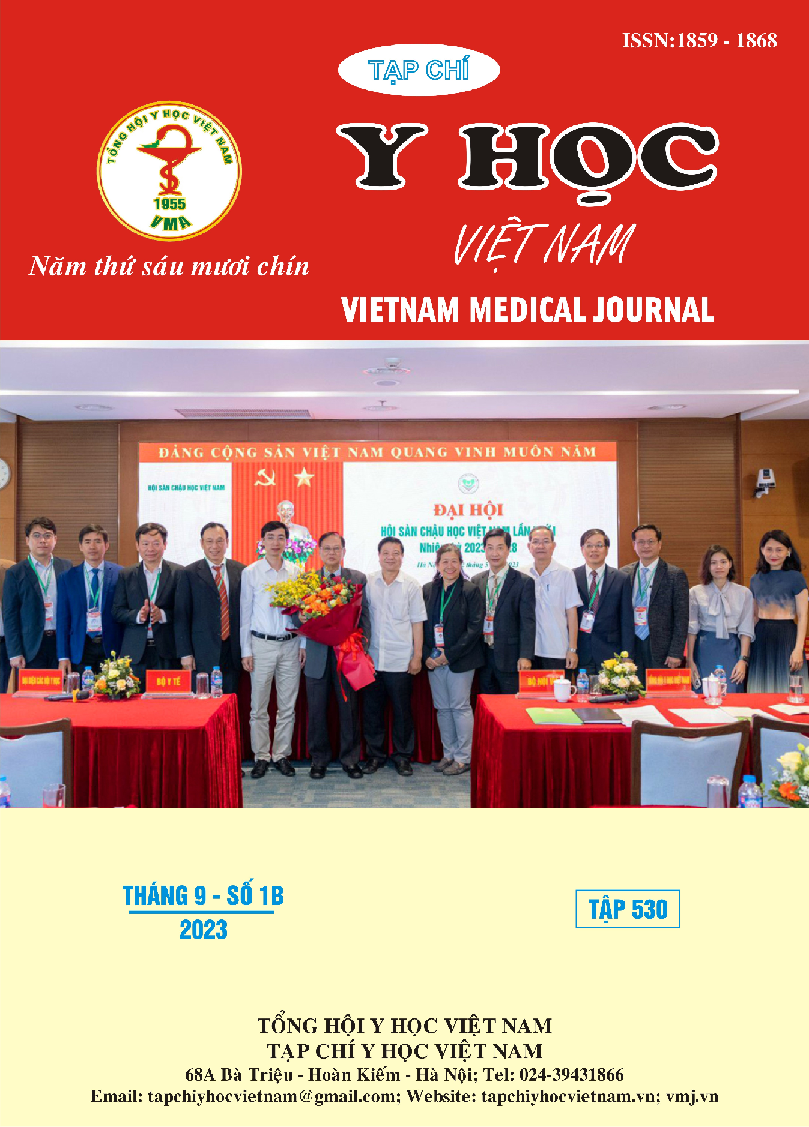CHARACTERISTICS OF PATIENTS WITH LONG COVID-19 SYMPTOMS AND THE NEED FOR TREATMENT OF PATIENTS POST-ACUTE COVID-19 AT CAN THO UNIVERSITY OF MEDICINE AND PHARMACY HOSPITAL
Main Article Content
Abstract
Introduction: Long COVID-19 and related issues have different characteristics and affect the physical, mental health of COVID-19 patients with various degrees. Supportive care needs rightly assessment to help with recovery, both in work and social rehabilitation. Objectives: Describe clinical, para-clinical characteristics of long COVID-19, related issues and the need for supportive care of patients after COVID-19 acute infections. Materials and methods: cross-section descriptive analysis of 667 patients from 16 years of age, presented at Long COVID-19 clinic, CTUMP Hospital with long COVID-19 symptoms. Results: general characteristics of the population: mean age was 40.8 ± 16.5 years, male-female ratio was 2:1. Comorbidities were mainly hypertension (12.7%), diabetes (2.4%) and chronic pulmonary diseases (3.3%). There were 3.5% of the patients did not receive vaccinations, 0.7% received one shot, 21.3% two shots, 70.3% three shots and 3.7% with four shots. Mean time to negative testing was 8.3 ± 3.8 days. Mean time with symptoms was 9.4 ± 10.8 days. Common long COVID-19 symptoms were cough (67.9%), fever (58.9%), headache (20.6%), muscle pain (20.8%), sore throat (48.1%), runny nose (30.1%), nose congestion (16.5%), loss of smell (21.6%), chest pain (4.9%), breathlessness (16.3%), insomnia (8.1%), stomachache (2.2%), diarrhea (5.5%). 5.4% of the patients were admitted in a hospital, patients with rehabilitation need and outpatient management took up 2.5% and 12.0% respectively. Conclusion: Long COVID-19 were common in the middle-ages, with low comorbidities and various clinical characteristics, demanded the need for rehabilitation and outpatient management at medical facilities.
Article Details
Keywords
Long COVID-19 symptoms, after acute COVID-19 infections, related issues, support need.
References
2. Phạm Đắc Trung (2023). Kết quả xét nghiệm âm hóa COVID-19 và yếu tố liên quan tới kết quả âm hóa sớm ở bệnh nhân thể nhẹ và vừa tại Bệnh viện COVID-19 số 1 Thái Nguyên. Tạp chí Y học Việt Nam, tập 525, tháng 4, số 1B, 319-323.
3. Ani Nalbandian et al, (2021), “Post-acute COVID-19 syndrome”, Nature medicine, vol 27, pp.601-625.
4. Guan, Wei-jie và các cộng sự. (2020), "Clinical Characteristics of Coronavirus Disease 2019 in China". 382(18), tr. 1708-1720.
5. Kim, Y., Bitna-Ha, Kim, SW. et al. (2022), Post-acute COVID-19 syndrome in patients after 12 months from COVID-19 infection in Korea, BMC Infect Dis 22, 93.
6. Thomas Bahmer, Christoph Borzikowsky,Wolfgang Lieb, et al. (2022), Severity, predictors and clinical correlates of Post-COVID syndrome (PCS) in Germany: A prospective, multi-centre, population-based cohort study, The Lancet, 51, 101549.
7. M. Tosato et al. Prevalence and Predictors of Persistence of COVID-19 Symptoms in Older Adults: A Single-Center StudyJAMDA 22 (2021) 1840e1844
8. Victoria Higgins. COVID-19: from an acute to chronic disease? Potential long-term health consequences. CRITICAL REVIEWS IN CLINICAL LABORATORY SCIENCES 2021, VOL. 58, NO. 5, 297–310.


